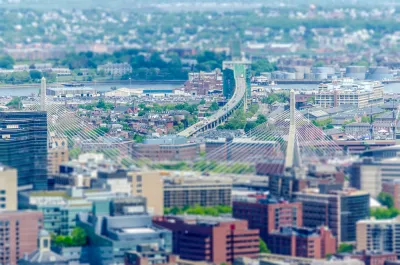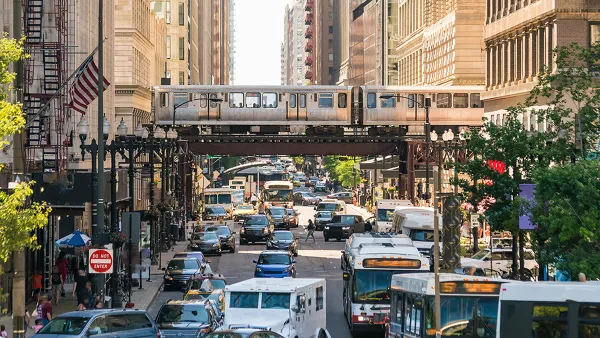The Boston Globe recently published an analysis of Boston-area traffic through the pandemic, finding that congestion is finally recovering to pre-pandemic levels, but in new patterns.

The traffic of 2021 is different than it was before the pandemic, according to an article by John Hancock explaining the findings of an analysis using traffic data from StreetLight Data, which uses location technology on mobile phones to measure traffic volumes.
According to the analysis of weekday traffic on Interstate 93, the Massachusetts Turnpike, and Interstate 95, traffic volumes still haven't recovered to 2019 levels. At three locations on the Turnpike, "average daily weekday traffic from April 1 through June 15 was still about 22 percent below 2019 levels," writes Hancock. Traffic on I-93 has been between 82 and 87 percent of pre-pandemic levels. Traffic on I-95 is hovering around 85 percent of where it was before the pandemic.
But one of the key findings of the analysis reveals more about how the characteristics of rush hour are changing. While the morning rush hour has been suppressed, traffic volumes can occasionally exceed pre-pandemic levels in the afternoon, and lasts for a longer duration of time.
According to Hancock, StreetLight data also finds similar trends at work in five other major U.S. metro areas. StreetLight describes the phenomenon of "morning and afternoon peaks in traffic were being replaced by traffic building gradually throughout the day toward a sustained afternoon high" as "peak spreading."
The article includes a lot more specific detail on the traffic data and also presents findings on the changes in weekend traffic in the Boston area. "After a year and a half of socially distancing throughout a pandemic, hourly travel data show that people are using all three roads on the weekend as much or even more than before," writes Hancock.
FULL STORY: How traffic has changed through the pandemic

National Parks Layoffs Will Cause Communities to Lose Billions
Thousands of essential park workers were laid off this week, just before the busy spring break season.

Retro-silient?: America’s First “Eco-burb,” The Woodlands Turns 50
A master-planned community north of Houston offers lessons on green infrastructure and resilient design, but falls short of its founder’s lofty affordability and walkability goals.

Delivering for America Plan Will Downgrade Mail Service in at Least 49.5 Percent of Zip Codes
Republican and Democrat lawmakers criticize the plan for its disproportionate negative impact on rural communities.

Test News Post 1
This is a summary

Test News Headline 46
Test for the image on the front page.

Balancing Bombs and Butterflies: How the National Guard Protects a Rare Species
The National Guard at Fort Indiantown Gap uses GIS technology and land management strategies to balance military training with conservation efforts, ensuring the survival of the rare eastern regal fritillary butterfly.
Urban Design for Planners 1: Software Tools
This six-course series explores essential urban design concepts using open source software and equips planners with the tools they need to participate fully in the urban design process.
Planning for Universal Design
Learn the tools for implementing Universal Design in planning regulations.
EMC Planning Group, Inc.
Planetizen
Planetizen
Mpact (formerly Rail~Volution)
Great Falls Development Authority, Inc.
HUDs Office of Policy Development and Research
NYU Wagner Graduate School of Public Service




























